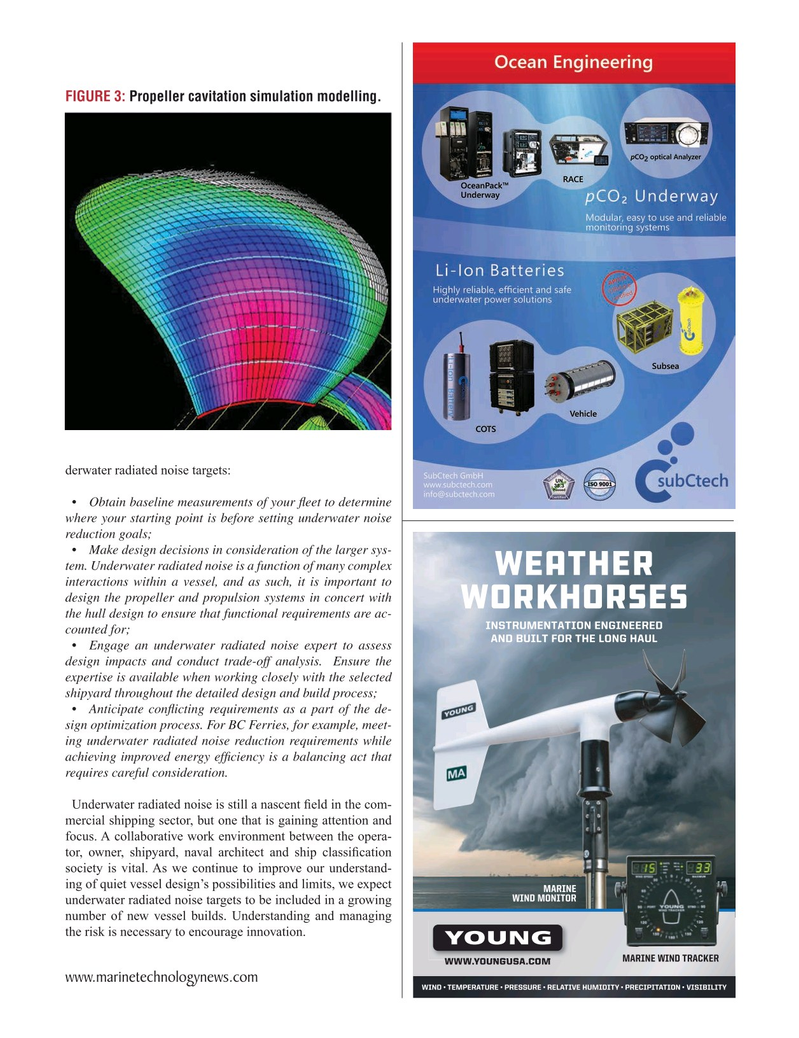
Page 45: of Marine Technology Magazine (November 2021)
Ocean Observation: Gliders, Buoys & Sub-Surface Networks
Read this page in Pdf, Flash or Html5 edition of November 2021 Marine Technology Magazine
FIGURE 3: Propeller cavitation simulation modelling.
derwater radiated noise targets: • Obtain baseline measurements of your ? eet to determine where your starting point is before setting underwater noise reduction goals; • Make design decisions in consideration of the larger sys- tem. Underwater radiated noise is a function of many complex interactions within a vessel, and as such, it is important to design the propeller and propulsion systems in concert with the hull design to ensure that functional requirements are ac- counted for; • Engage an underwater radiated noise expert to assess design impacts and conduct trade-off analysis. Ensure the expertise is available when working closely with the selected shipyard throughout the detailed design and build process; • Anticipate con? icting requirements as a part of the de- sign optimization process. For BC Ferries, for example, meet- ing underwater radiated noise reduction requirements while achieving improved energy ef? ciency is a balancing act that requires careful consideration.
Underwater radiated noise is still a nascent ? eld in the com- mercial shipping sector, but one that is gaining attention and focus. A collaborative work environment between the opera- tor, owner, shipyard, naval architect and ship classi? cation society is vital. As we continue to improve our understand- ing of quiet vessel design’s possibilities and limits, we expect underwater radiated noise targets to be included in a growing number of new vessel builds. Understanding and managing the risk is necessary to encourage innovation.
www.marinetechnologynews.com
MTR #8 (34-49).indd 45 11/22/2021 3:56:23 PM

 44
44

 46
46
